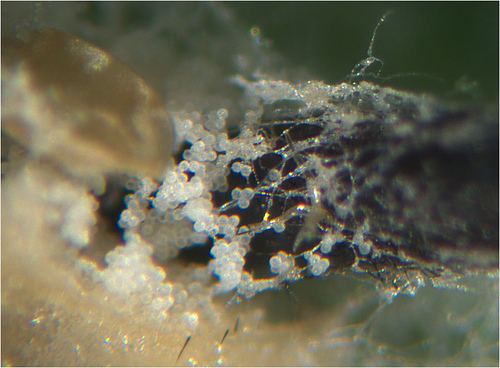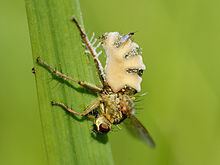Scientific name Entomophthorales | Subdivision Entomophthoromycotina Higher classification Phycomycetes | |
 | ||
Lower classifications | ||
Conidias de entomophthorales 1 3
The Entomophthorales are an order of fungi that were previously classified in the class Zygomycetes. A new subdivision, Entomophthoromycotina, has recently been circumscribed for them.
Contents
- Conidias de entomophthorales 1 3
- Conidias de entomophthorales 2 3
- Highlighted species
- Biology
- Classification
- References

Most species of the Entomophthorales are pathogens of insects. A few attack nematodes, mites, and tardigrades, and some (particularly species of the genus Conidiobolus) are free-living saprotrophs.

The name Entomophthorales is derived from the Greek for insect destroyer (Gk: entomo=insect, phthor=destroyer)
Conidias de entomophthorales 2 3
Highlighted species

Biology
Most species of the Entomophthorales produce ballistic asexual spores that are forcibly discharged. When not landing on a suitable host, these spores can germinate to make one of several alternate spore forms, including a smaller version of the original spore, or (in some species) an adhesive spore elevated on a very slender conidiophore called a capilliconidiophore.
Classification
Recent debate has centered on whether the Basidiobolaceae should be included in the Entomophthorales, or raised to ordinal status. Molecular systematics approaches so far give an ambiguous answer. Some analyses suggest the Basdiobolaceae are more closely related to certain chytrid fungi than to the Entomophthorales. Others find weak support to maintain them in the Entomophthorales. Morphological characters can be found to support either hypothesis.
